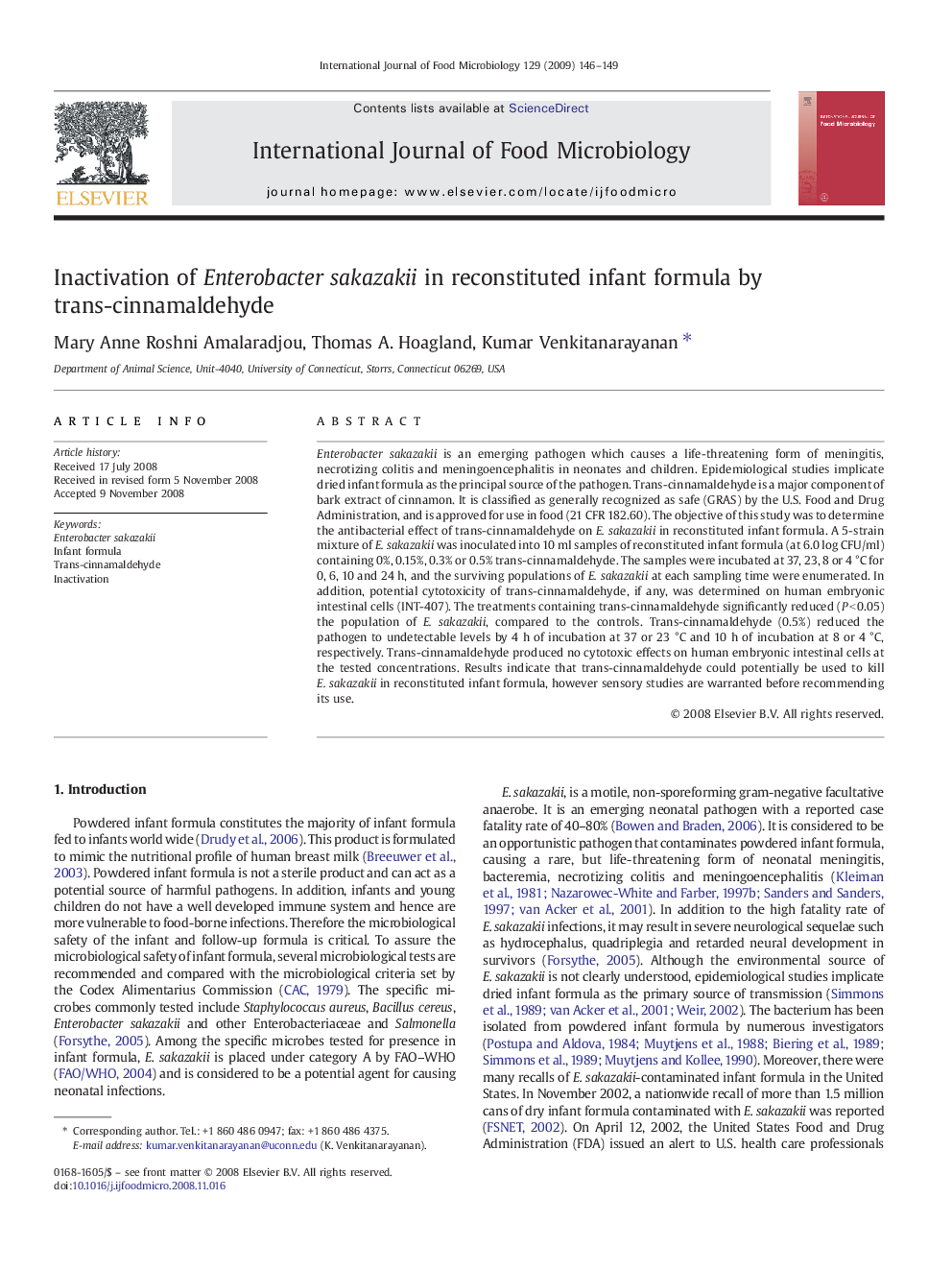| Article ID | Journal | Published Year | Pages | File Type |
|---|---|---|---|---|
| 4369170 | International Journal of Food Microbiology | 2009 | 4 Pages |
Enterobacter sakazakii is an emerging pathogen which causes a life-threatening form of meningitis, necrotizing colitis and meningoencephalitis in neonates and children. Epidemiological studies implicate dried infant formula as the principal source of the pathogen. Trans-cinnamaldehyde is a major component of bark extract of cinnamon. It is classified as generally recognized as safe (GRAS) by the U.S. Food and Drug Administration, and is approved for use in food (21 CFR 182.60). The objective of this study was to determine the antibacterial effect of trans-cinnamaldehyde on E. sakazakii in reconstituted infant formula. A 5-strain mixture of E. sakazakii was inoculated into 10 ml samples of reconstituted infant formula (at 6.0 log CFU/ml) containing 0%, 0.15%, 0.3% or 0.5% trans-cinnamaldehyde. The samples were incubated at 37, 23, 8 or 4 °C for 0, 6, 10 and 24 h, and the surviving populations of E. sakazakii at each sampling time were enumerated. In addition, potential cytotoxicity of trans-cinnamaldehyde, if any, was determined on human embryonic intestinal cells (INT-407). The treatments containing trans-cinnamaldehyde significantly reduced (P < 0.05) the population of E. sakazakii, compared to the controls. Trans-cinnamaldehyde (0.5%) reduced the pathogen to undetectable levels by 4 h of incubation at 37 or 23 °C and 10 h of incubation at 8 or 4 °C, respectively. Trans-cinnamaldehyde produced no cytotoxic effects on human embryonic intestinal cells at the tested concentrations. Results indicate that trans-cinnamaldehyde could potentially be used to kill E. sakazakii in reconstituted infant formula, however sensory studies are warranted before recommending its use.
